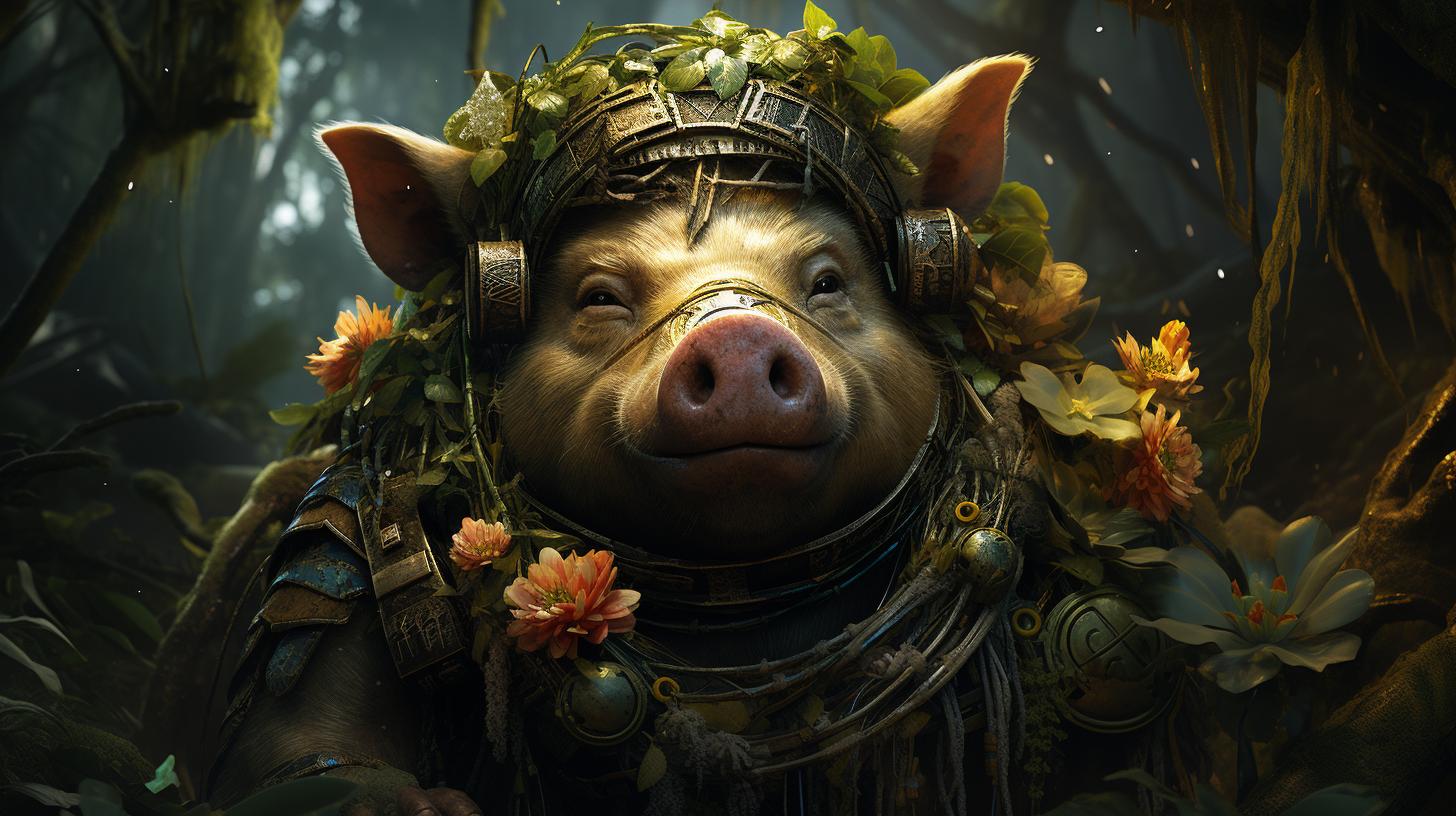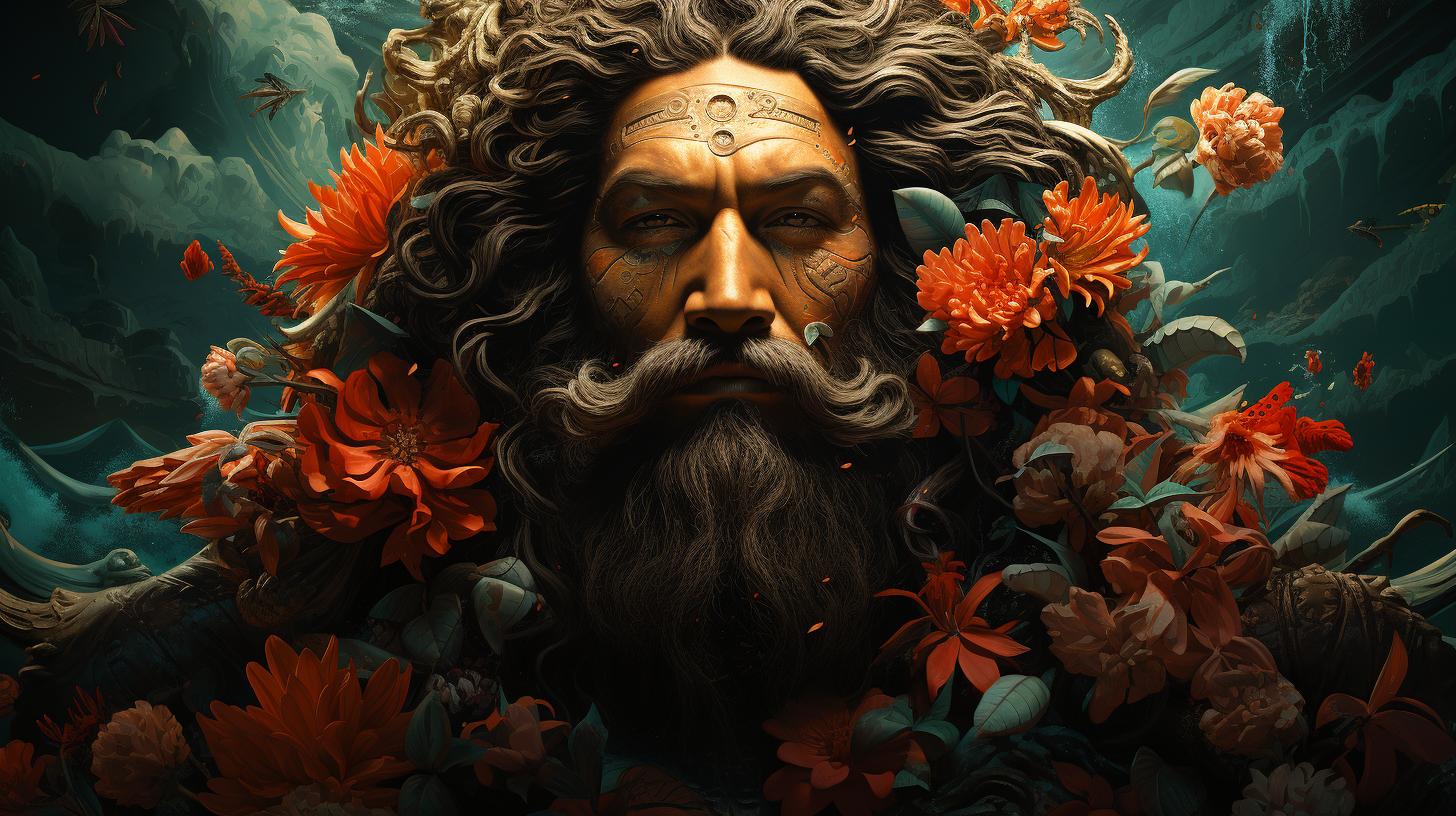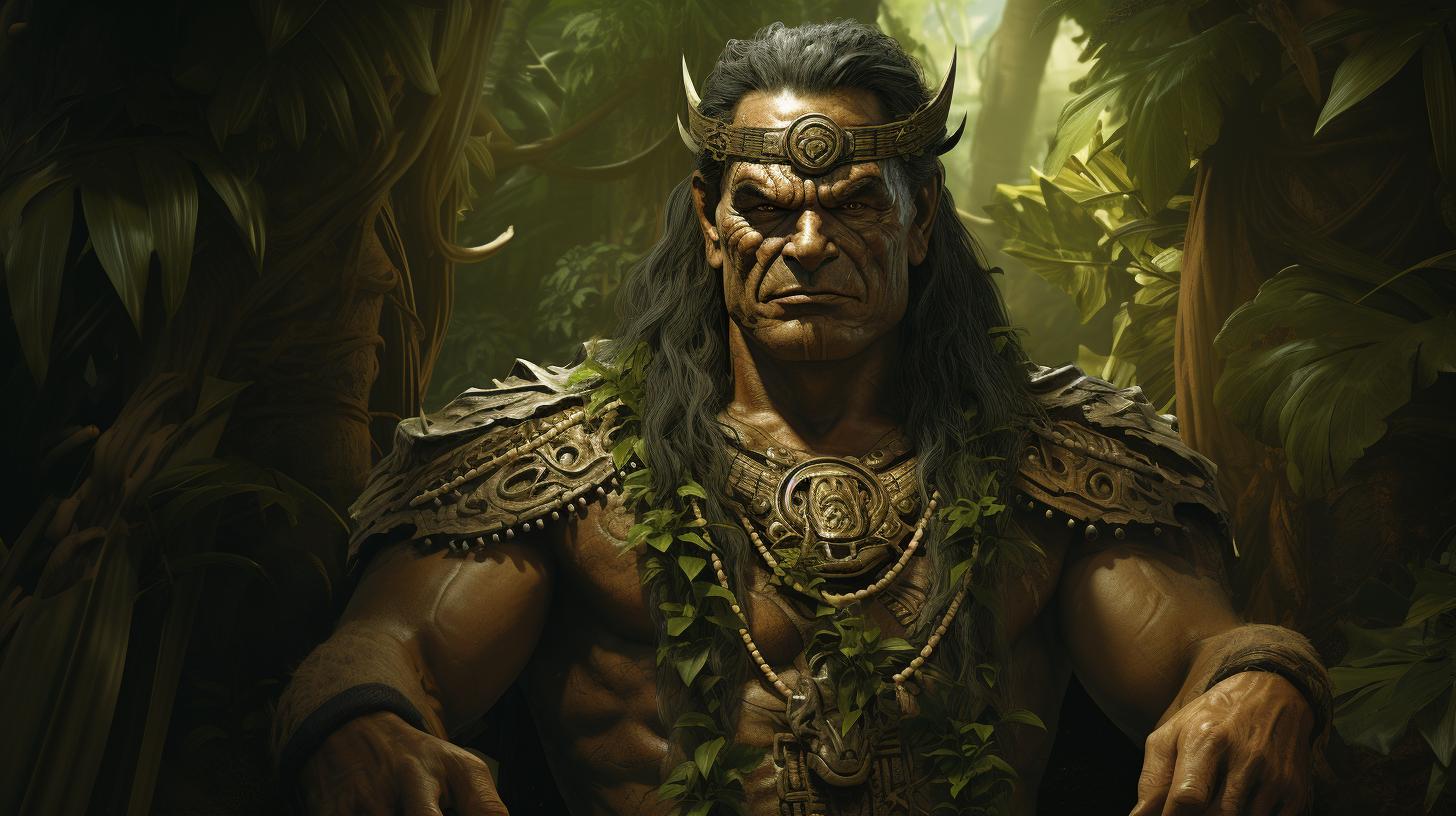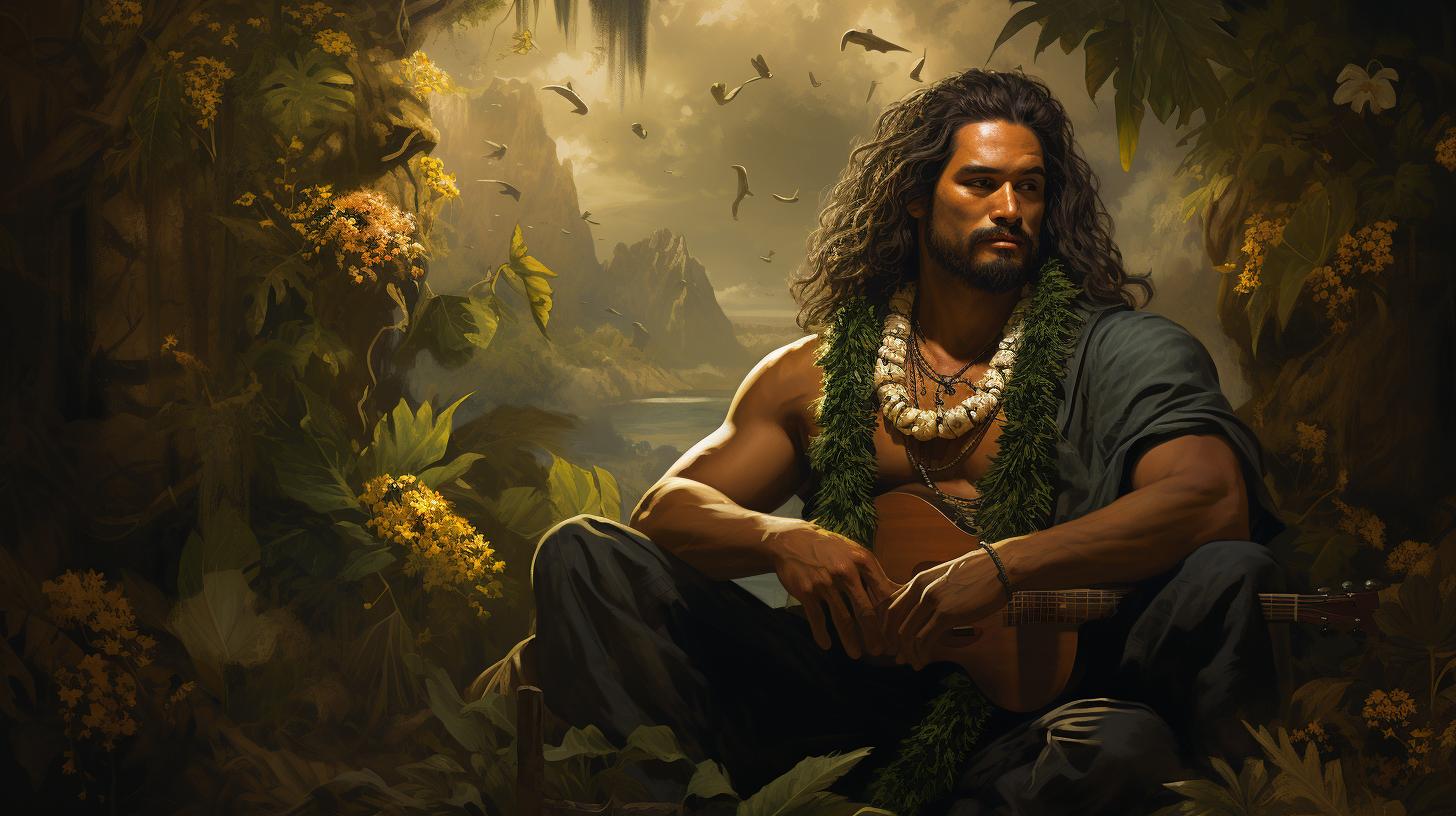Hawaiian Goddess Kapo: Unveiling the Powerful and Enigmatic Hawaiian Deity
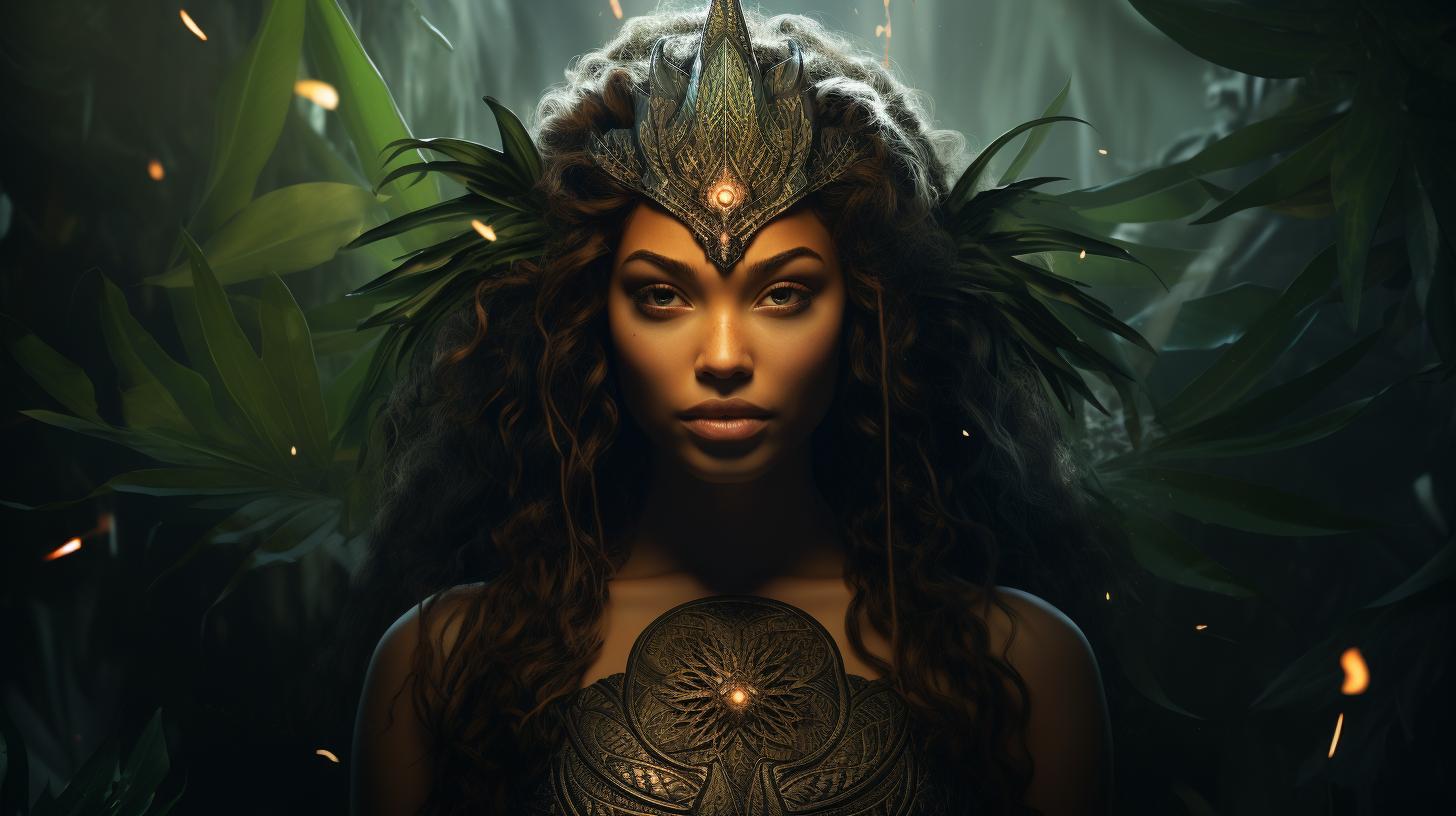
Hawaiian goddess Kapo, a powerful and enigmatic deity in Hawaiian mythology, is associated with fertility, birth, sorcery, and prophecy. Revered and feared, she possesses the unique ability to reverse curses and spells.
Additionally, Kapo is connected to the traditional Hawaiian dance, hula. Her intriguing legend includes a notable aspect: a detachable vagina used as a clever decoy. Kapo’s family ties trace back to Haumea, the lunar spirit, and her sister Pele, the renowned volcano goddess.
This article explores Kapo’s cultural significance, her influence on modern references, and the historical meaning of “kapu,” the ancient Hawaiian system of laws and rituals.
Who is Hawaiian Goddess Kapo?
Hawaiian Goddess Kapo is a prominent figure in Hawaiian mythology, representing various aspects of life and death. Revered by the ancient Hawaiians, Kapo is associated with fertility, birth, abortion, witchcraft, and prophecy, making her a powerful and unpredictable deity.
Kapo’s significance extends beyond her association with life and death. She also has a deep connection with hula, the traditional Hawaiian dance. Through her presence in hula, Kapo embodies the cultural expression and sacredness of the dance form.
Described as Kapo-‘īula-kīna‘u at times, the Hawaiian goddess sports a distinctive appearance. She is adorned in red garments adorned with black markings, bestowing her with a unique and captivating presence in Hawaiian mythology.
One of the most intriguing aspects of Kapo’s myth is her detachable vagina. Legends tell of how she used this distinct body part as a decoy to assist her sister, Pele, in evading advances from the persistent Kamapua’a.
This story reflects the creative and unconventional nature of Hawaiian mythology, interwoven with symbolism from the natural world and human experiences.
Kapo’s family connections further enrich her character. Haumea, the lunar spirit, is believed to be her mother, and Pele, the renowned goddess of fire, is her younger sister and occasional travel companion.
Kapo’s arrival in Hawaii predates even Pele’s, and she is credited with establishing hula schools on each of the Hawaiian islands upon her arrival, contributing to the preservation and dissemination of this sacred and cultural dance form within the archipelago.
While references to Kapo in modern times may be relatively scarce, there are notable examples of her continued influence. Kapolei, a city located on the island of Oahu, derives its name from ‘Amada Kapo,’ paying homage to the Hawaiian deity.
Another reference to Kapo can be found in Kohelepelepe, also known as Koko Head, a volcanic crater situated on Oahu.
Beyond the realm of divine presence, the term ‘kapu’ holds cultural and historical significance in Hawaii.
Translating to ‘taboo’ or ‘sacred,’ ‘kapu’ describes the ancient Hawaiian system of laws and rituals governing various aspects of social and religious life. In 1819, King Kamehameha II, with the assistance of his mother Keōpūolani, who traced her lineage to Kapo, abolished the kapu system.
This historic event marked a significant moment in Hawaiian history and culture.
Kapo: The Fertility Sorceress in Hawaiian Mythology
Kapo, known as the Fertility Sorceress, is a prominent figure in Hawaiian mythology. She is revered for her powers associated with fertility, birth, and magic. Let’s explore two key aspects of Kapo’s role in Hawaiian mythology – her association with fertility and birth, and her powers of reversing curses and spells.
The Association with Fertility and Birth
Kapo is closely connected to the realms of fertility and birth in Hawaiian mythology. She is considered a guardian of life and is believed to have the ability to bestow fertility upon women.
Kapo is often invoked for blessings during pregnancy, childbirth, and conception.
In Hawaiian culture, Kapo is believed to possess great wisdom and knowledge related to the cycles of life and the natural world.
She is seen as a guiding force for women, helping them navigate through the journey of motherhood. Many women would seek her assistance in seeking conception or a safe delivery.
Kapo’s Powers of Reversing Curses and Spells
Kapo is also renowned for her remarkable powers to reverse curses and spells.
Known for her ability to protect against malevolent magic, she is revered as a potent force against dark forces and negative energies.
According to Hawaiian folklore, Kapo’s intervention could neutralize harm caused by curses or harmful spells.
She was considered a guardian of the people, using her powers to bring about balance and restore harmony in the face of adversity.
Believed to possess profound mystical knowledge and forces beyond human comprehension, Kapo’s ability to reverse curses and spells made her an influential figure in Hawaiian spirituality.
In conclusion, Kapo, the Fertility Sorceress, holds immense significance in Hawaiian mythology for her association with fertility and birth, as well as her powers of reversing curses and spells. Her role as a guide and protector of life makes her a revered figure in Hawaiian culture and spirituality.
Kapo and her Connection with Hula: The Dance of the Hawaiian Culture
Kapo, the Hawaiian goddess, holds a unique connection with the traditional dance form known as hula. Hula is not merely a dance but a vibrant expression of Hawaiian culture, history, and spirituality.
It serves as a medium to transmit stories, legends, and traditions from one generation to another.
In the realm of Hawaiian mythology, Kapo’s association with hula adds depth to her character and significance. She is believed to have played a pivotal role in the preservation and spread of hula throughout the Hawaiian Islands.
According to some accounts, Kapo is credited with establishing hula schools on each island upon her arrival, ensuring the continued practice and reverence for this sacred form of dance.
Hula itself embodies the essence of the Hawaiian people’s deep connection with nature, their land, and their spiritual beliefs. Through graceful movements, hand gestures, and chants, hula dancers communicate ancient stories, celebrate deities, and express emotions that connect them with their ancestors and the divine.
Kapo’s role in hula symbolizes her bond with the land and its spirits. She holds a sacred place in the hearts of those who continue to honor and practice hula today, as her presence is invoked through the graceful motions and rhythmic chants of the dance.
Furthermore, hula serves as a powerful medium to honor other Hawaiian deities, such as Pele, the goddess of fire and volcanoes. Often, hula performances pay homage to the volcanic forces that shape the islands and the powerful goddess who embodies them.
Kapo’s connection with her sister Pele further highlights the intertwining of hula and Hawaiian mythology.
To experience hula is to witness the embodiment of the rich cultural heritage and spiritual essence of the Hawaiian people. By exploring Kapo’s connection with hula, one can gain a deeper appreciation for the dance and its significance in Hawaiian culture.
The Intriguing Legend of Kapo’s Detachable Vagina
Within the captivating mythology of Hawaiian goddess Kapo, an intriguing aspect emerges – her detachable vagina. This mythological tale tells of Kapo’s resourcefulness in using this unique attribute as a decoy to thwart the advances of the persistent Kamapua’a and aid her sister Pele in escaping his amorous pursuits.
Kapo’s Ingenious Use of her Detachable Vagina
The legend unfolds with Kapo strategically detaching her vagina, placing it on a rock by the seashore. As Kamapua’a approaches, he is enticed by this alluring sight, believing it to be Pele herself.
He becomes mesmerized and captivated by the phantasm, while Pele manages to slip away unnoticed.
This tale of Kapo’s detachable vagina showcases the creative and unconventional nature present in Hawaiian mythology.
It intertwines symbolism with the natural world and human experiences, reflecting the richness and complexity of Hawaiian culture.
This captivating legend sheds light on the mystical powers attributed to Kapo and her role in protecting her sister and thwarting undesirable advances.
It exemplifies the depth and enigmatic nature of the goddess, further emphasizing her significance in Hawaiian mythology and folklore.
Kapo’s Family Connections and Role in Hawaiian Mythology
Kapo, the powerful Hawaiian goddess, holds deep familial ties and plays a significant role in the mythology of Hawaii. Exploring her family connections sheds light on the complexities of her character and the interwoven tales of Hawaiian deities.
Kapo’s Mother: Haumea, the Lunar Spirit
Haumea, the lunar spirit, is revered as Kapo’s mother in Hawaiian mythology. As a maternal figure, Haumea represents the fertile energies of the moon. Her influence on Kapo’s development emphasizes the goddess’s connection to the cycles of life and the nurturing aspects of nature.
Kapo’s Sister: Pele, the Hawaiian Goddess of Fire
An intriguing aspect of Kapo’s mythology lies in her sisterhood with Pele, the prominent Hawaiian goddess of fire. These two powerful beings share a bond beyond mere blood ties, often embarking on journeys together and influencing each other’s stories.
While Kapo represents fertility and sorcery, Pele embodies the fiery forces of volcanoes.
This dynamic duo brings both balance and contrast to Hawaiian mythology, exemplifying the multifaceted nature of the deities and their interconnected roles in the spiritual realm.
Kapo’s Cultural Influence and References in Modern Hawaii
Kapo, the enigmatic Hawaiian goddess, continues to leave her mark on the cultural landscape of modern Hawaii. Her influence can be seen in various aspects, including the naming of Kapolei City and the connection to Kohelepelepe, also known as Koko Head.
Kapo’s Influence on the Naming of Kapolei City
Kapolei City, located on the island of Oahu, derives its name from the beloved Hawaiian deity. The name “Kapolei” translates to “Amada Kapo” in honor of this powerful goddess. This city serves as a modern homage to Kapo and her significant role in Hawaiian mythology.
The Kapo Connection to Kohelepelepe (Koko Head)
Kapo’s influence extends to the natural landmarks of Hawaii, including the volcanic crater known as Kohelepelepe or Koko Head. This awe-inspiring formation holds ties to the goddess, symbolizing her presence and revered power in the islands.
Kohelepelepe stands as a testament to the lasting impact of Kapo and the deep connection between mythology and the natural world in Hawaiian culture.
Understanding the Cultural Significance of “Kapu” in Hawaiian History
Exploring the Meaning and Importance of ‘Kapu’
The concept of ‘kapu’ held immense cultural and historical significance in ancient Hawaiian society.
Derived from the Hawaiian word meaning “taboo” or “sacred,” ‘kapu’ encompassed a complex system of laws and rituals that governed various aspects of social and religious life.
These kapu laws regulated behaviors, etiquette, gender roles, land use, and even access to certain areas.
They played a crucial role in maintaining order, preserving spiritual customs, and reinforcing social hierarchies within Hawaiian communities.
Furthermore, ‘kapu’ extended beyond mere practicality and held deep spiritual meaning. Violations of ‘kapu’ were believed to bring about severe consequences, including divine punishment or spiritual unrest.
The Abolition of the Kapu System: A Turning Point in Hawaiian History
The abolition of the kapu system in 1819 marked a significant turning point in Hawaiian history and cultural dynamics.
Under the rule of King Kamehameha II and the influence of his mother, Keōpūolani, the kapu laws were abolished, bringing about sweeping changes in Hawaiian society.
This bold decision challenged the traditional power structures and religious beliefs that had been in place for centuries.
It allowed for greater personal freedoms, social mobility, and the emergence of a more inclusive and dynamic Hawaiian society.
However, it is important to note that the abolition of the kapu system also led to cultural shifts and challenges, as it disrupted traditional customs and belief systems deeply rooted in the Hawaiian way of life.
The impact of this historical event reverberates through Hawaiian culture to this day, shaping the modern understanding and appreciation of Hawaiian traditions, values, and the resilience of its people.
.













